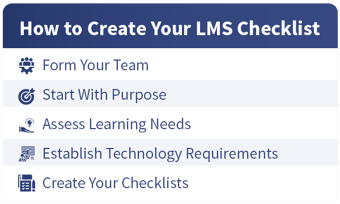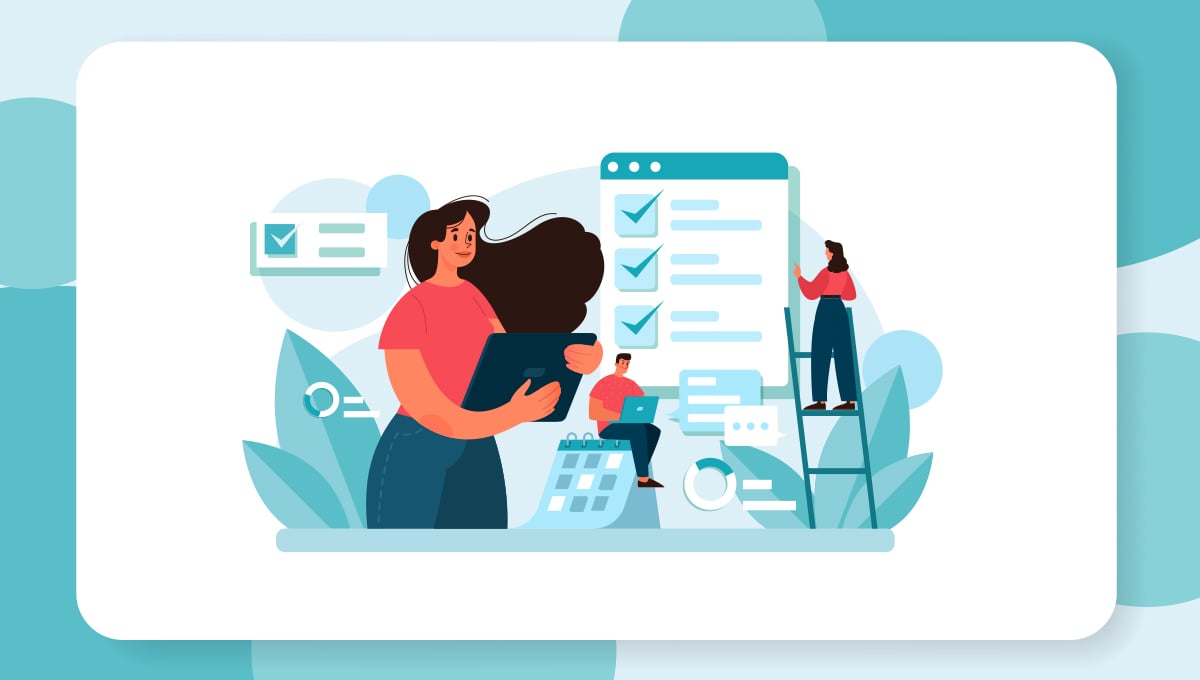Selecting a suitable LMS for your business can be a challenge, but you can create better success and reduce the risks by following the principles in this guide.
First, a bit of history:
In the 1980s, the LMS had one primary purpose: tracking and reporting required training to reduce exposure to regulatory fines and censure.
However, that it could do other activities was “nice to have."
Then came the internet, and learning moved online.
As new learning methods drove new technology, technology spawned new learning strategies.
Today, thousands of new companies have developed an astounding array of platforms to deliver learning.
The Learning Technology Stack
Josh Bersin’s HR Technology 2021: The Definitive Guide gives us a comprehensive overview of the technologies that serve learning today.
The Learning Management System
The LMS is no longer the center of learning—it is one of many. However, it still has an essential place in learning technology and serves as the foundation for your tech stack.
The LMS is still working away at what it does best. However, many LMS vendors have integrated with the other technologies in this list.
Learning Experience Platforms
The LXP is a platform for self-directed learning. Its primary purpose is to make learning easy for individuals to find and use.
In doing that, it presents learning resources and paths much like online shopping and or selecting an online video.
In a trend toward market consolidation, enterprise LMS vendors like SumTotal and Cornerstone include LXPs in their portfolios.
For example, Skillsoft acquired SumTotal in 2014, and Cornerstone expanded into the LXP market by buying Saba in 2020.
The LXP is now a mature market with many vendors.
Program Platforms
While the LMS and LXP deliver learning courses and experience, learning program platforms provide a thorough exploration of a learning topic.
For example, if you need to develop broad expertise in a topic area but don’t have time for a degree, program platforms are an excellent choice.
Program platforms liked Edx grew out of the Massive Open Online Courses (MOOC), which offers free university-level training on a complete topic.
Online Marketplace
The proliferation of online learning has created a massive online market for any learning topic you can imagine.
Being so accessible, it is an affordable way for individuals to pursue learning goals independently.
Micro-learning Platforms
Adaptive learning is a method of providing small, self-contained modules for learning on the go, based on the individual’s learning history and progress.
It adjusts the learning path based on how the learner performs. A good example is the online language learning program Duolingo.
Simulations
One of the most challenging learning needs has always been in high-risk situations where mistakes can be disastrous.
Since falling out of the sky is not cost-effective, flight simulators have been a mainstay in the aviation industry for decades.
However, the technology has been too expensive for most companies until recently.
Recent technology gains, including AI, have brought us new solutions:
- Virtual Reality (VR) has made lifelike simulation easy to do, and its use has expanded into hundreds of high-risk situations, including complex medical procedures.
- Augmented Reality (AR) presents data and visualizations in real-time. For example, a worker can use it to “see” inside mechanical and technical components to understand how they work.
Assessment / Development Platforms
Sophisticated AI assessment and development tools enabled advanced, detailed learning intelligence to enable development.
Workflow Learning
To enable interactive “learning in the flow of work,” workflow learning technology presents training, video, and contextual help embedded in work applications.
xAPI and the Learning Record Store
A giant leap forward from the old SCORM standard, the Experience API captures data from learning activities and stores it in a Learning Record Store.
Now, we can understand learning behavior with that detailed data, gathering both online and offline information.
Social Learning
Humans have learned by observing and learning from others since the dawn of time. It is the primary way we learn and convert knowledge into action.
In the early 2000s, we engaged in remote social learning with wikis and AOL Instant Messenger.
Today, we have a wealth of collaborative technologies that enable social learning almost anywhere.
LMS vendors build those tools into their platforms, and collaboration platforms like Teams and Slack integrate learning into their technology.
To make sense of all that technology requires analysis, but technology is not the place to start.
The best method starts with your needs. Follow along as we show you how to develop your checklist.
A Different Kind of LMS Checklist
If you want a quick checklist that will make your decisions for you, you won’t find it here.
Our checklist is not a “tick off the box” for features and capabilities because learning has become too complex for a universal list of needs.
Every organization’s checklist will be different. So, it would be best if you created your own.
Instead of a list of features, ours is a series of steps to develop your checklist.
The first task is to gain the support and participation of the right people.
1. Form Your Team
Every person in your organization (and possibly some outside it) has a stake in learning—even if they don’t believe they do.
- New people must learn about their jobs and adapt to the culture.
- Leaders must develop and grow, and...
- People must learn new ways of thinking as business conditions, technology, and regulations change.
Governance
There is a way to include all your stakeholders in your plan without creating chaos.
A governance framework brings the right people into your decision-making at each level and step in your process at the right time.
While your governance framework doesn’t replace your organization structure, it works within it.
It usually comprises:
- an executive council of top leaders that create the vision and policies,
- steering committees that develop procedures and practices, and
- working or project committees that carry out operations.
The design will be unique to your organization.
You can get started by bringing your top stakeholders into your team. To get the details on governance, read our article on How Governance can Align L&D With Business Strategy.
2. Start With Purpose
In the second step, work with your executive team to define the business reasons you need a technology platform.
Draft a vision and purpose aligned with your business strategy and purpose.
3. Assess Learning Needs
Work with your workforce planning team to assess the learning needs of each group in the enterprise.
The assessment will probably be a skills framework from which you determine your skill gaps.
Your needs assessment should cover more than simple job skills.
It must also include what people need to succeed in current and future business, technology, social, and regulatory environments.
From your assessment, you will learn what learning your people will need now and in the future.
Your learning professionals or consulting team will help you determine the optimum learning modalities and methods to build and maintain those capabilities.
4. Establish Technology Requirements
From your assessment, identify what you need to deliver learning. Look at each area separately instead of thinking about how to do everything.
The “everything” solution might be correct, but it’s best to wait for more information.
When you decide later during the process, you will consider many factors, including cost and ease of use.
5. Create Your Checklist
With the criteria you’ve developed, you can create your checklist.
Start by organizing them by criticality. It could be something like this:

- Required
- Desired
- Nice to Have
- Not Yet (say when)
Work with your team through a series of reality checks by understanding the technology market and asking thought-provoking questions:
- Do you need a platform that can manage required training in multiple locations with differing requirements? (If so, explore the enterprise LMS vendors.)
- Do you need to manage certifications and credentials?
- Will you sell training?
- Will you provide training for customers?
- Do you need an extended enterprise platform to train your distribution channels?
- Can some parts of the organization with simple needs use an inexpensive, off-the-shelf solution?
- Can you save money by combining capabilities on one platform?
- Do you need specific features right now, or can you wait for a vendor to develop them?
Now you can create your checklist.
| It will be the Ultimate Checklist because it will be uniquely yours. |
Last of all, please get in touch with us if you get stuck. We don’t sell solutions—we help you find and deploy the right solutions for your business.
PhenomᵉCloud is a full-service technology company dedicated to helping clients solve business problems, improve the capability of their people, and achieve better results.


Leave a Comment